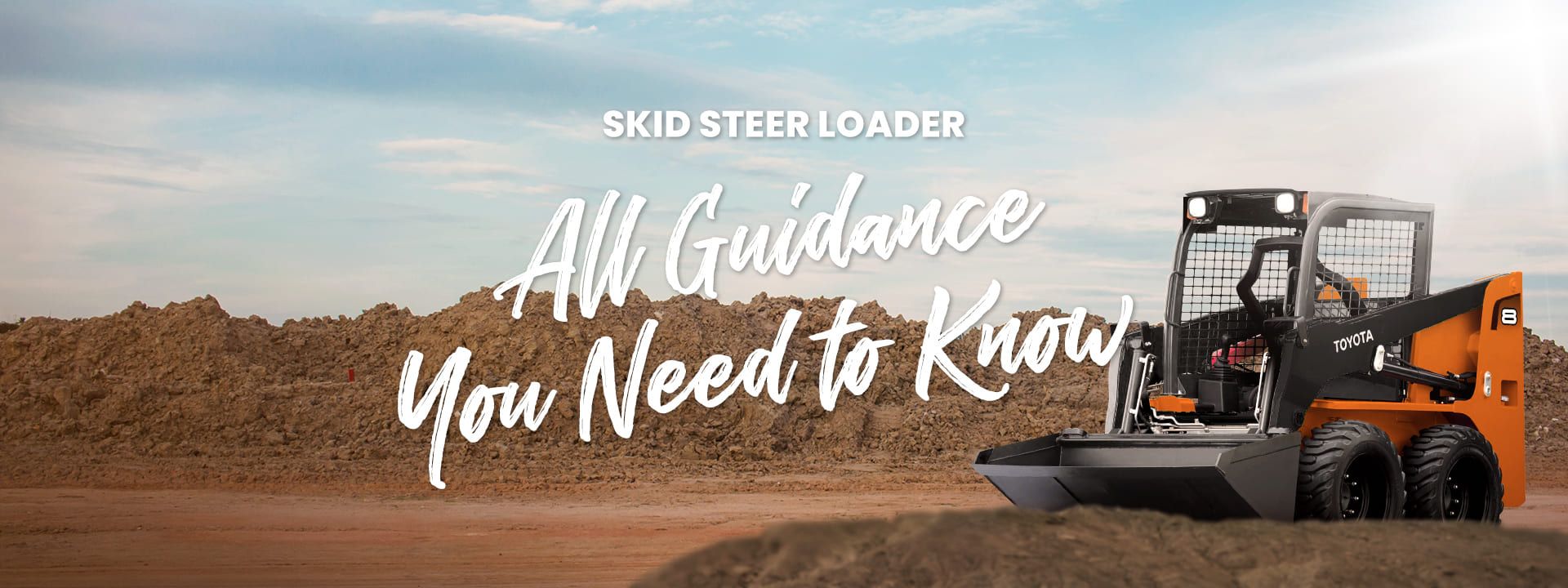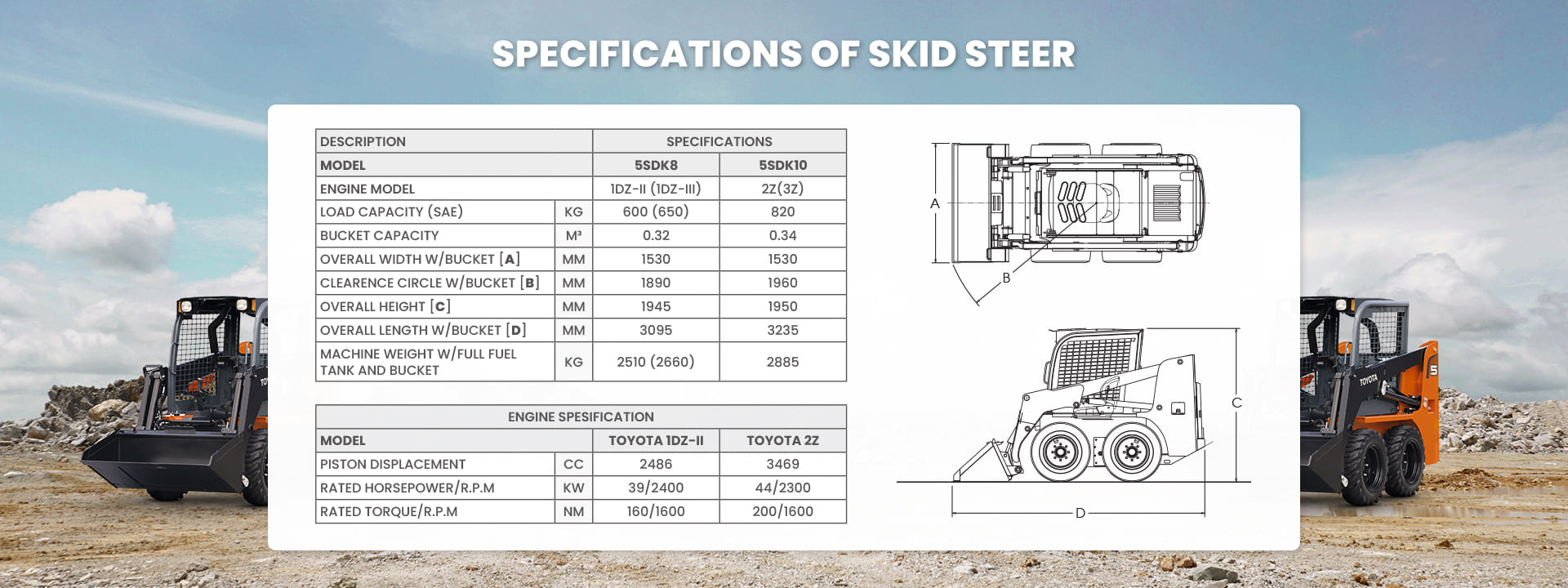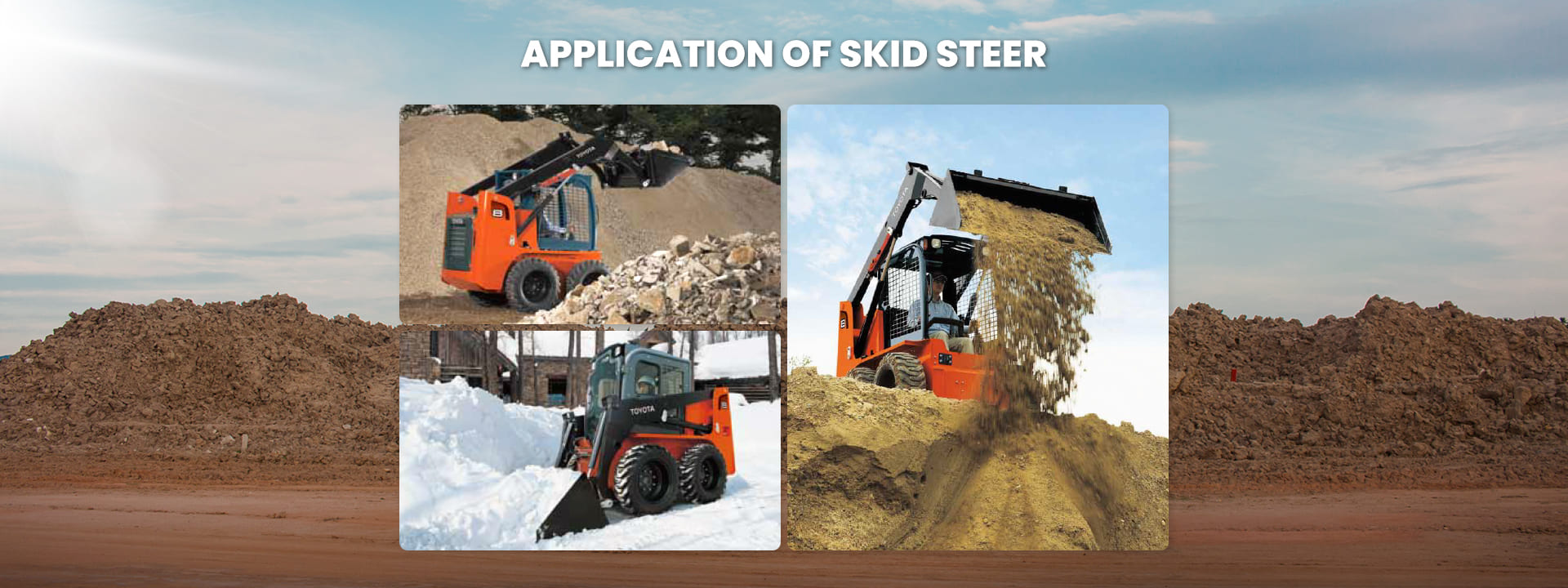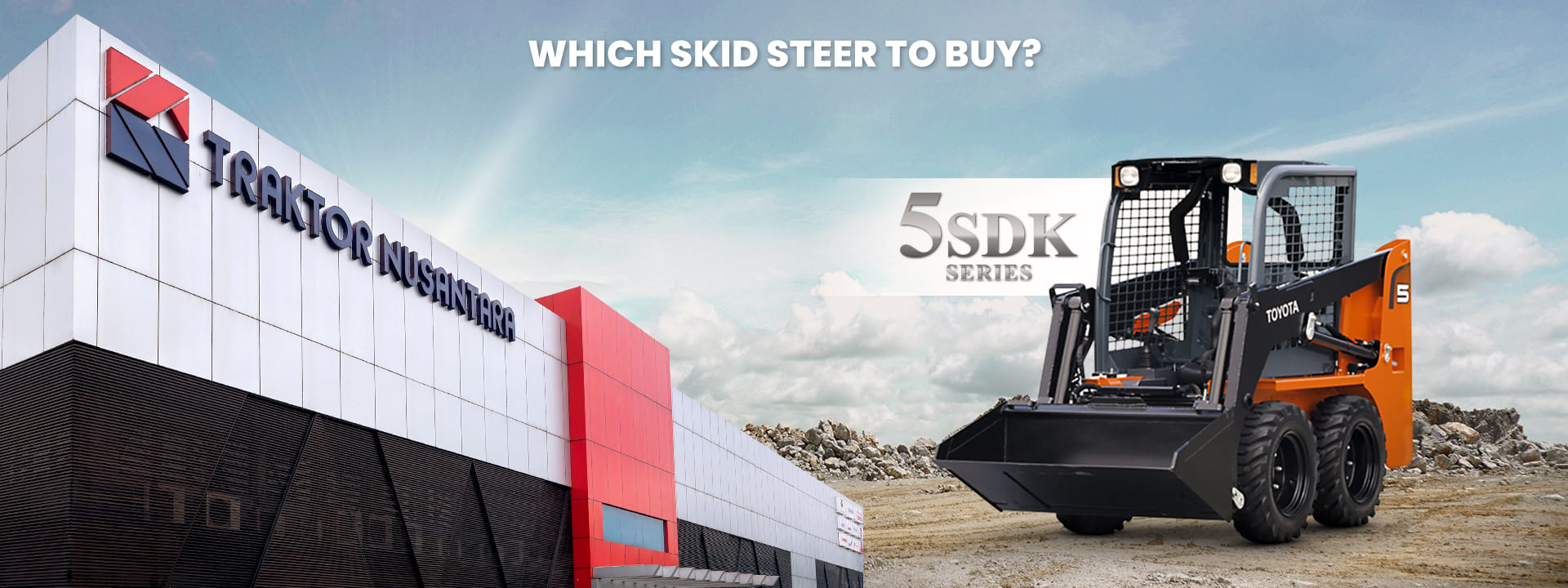
Skid steer loaders, often referred to as SSLs, are compact heavy equipment with versatile lift arms that can connect to various attachments, making them indispensable in a range of applications.
These heavy machines have evolved into essential equipment across various industries due to their versatility, compact design, and maneuverability. If you are interested in using it for your business or industry, let's explore the details here.
A skid steer, also known as a skid-steer loader or SSL is a compact, versatile piece of heavy equipment designed for various applications.
These machines have arms that lift and can connect to various buckets and tools, making them useful in construction, landscaping, farming, and more.
What makes skid steers unique is how they steer. Unlike regular vehicles, they don't have a separate steering system. Instead, they use differential steering, where the left and right wheels move at different speeds.
This enables the machine to turn by sliding or dragging its fixed wheels on the ground, allowing it to turn in a very tight space.
This heavy equipment has an origin story that unfolds in the late 1950s. The credit for this versatile machine goes to the Keller brothers, Cyril and Louis, in Rothsay, Minnesota, in 1957.
Their creation was initially a response to a farmer's need to mechanize the cleaning of turkey manure from his barn. At first, the Keller brothers' invention was a three-wheeled, front-end loader that featured a unique steering mechanism allowing it to turn within its own length.
This innovation paved the way for what we now know as skid steer loaders. Recognizing the potential of this compact and maneuverable machine, the Melroe brothers (Melroe Manufacturing Company) in North Dakota acquired the rights in 1958.
The collaboration led to the introduction of the M-200 Melroe as a self-propelled loader at the end of 1958, marking the beginning of skid steer development.
Over the years, improvements and innovations continued, eventually giving rise to the widely used and recognized skid steer loaders we see today.
Compared to other heavy machines, skid steer loaders come with many benefits, making them indispensable in various industries. The benefits include:
One of the primary advantages is their exceptional maneuverability, thanks to the unique zero-turn capability. This feature allows skid steers to navigate through tight spaces with ease, making them ideal for tasks in confined work areas.
Additionally, the compact size of skid steer loaders enhances their versatility. They can easily access areas where larger equipment might struggle, providing a solution for a wide range of applications, from construction sites to landscaping projects.
The ability to perform within their own length allows operators to efficiently complete tasks in challenging environments.
This machine also excels in material handling, with the capability to push, carry, and load materials efficiently.
Their adaptability is further enhanced by a variety of attachments, such as snow blowers, trenchers, pallet forks, and more, allowing them to tackle diverse tasks with a single machine.
Moreover, the ease of operation and quick attachment changes contribute to increased productivity.
So, operators can swiftly switch between different tools without leaving the machine, streamlining workflow and minimizing downtime. This efficiency is particularly crucial in time-sensitive projects.

Skid steers or SSL are characterized by their compact build, equipped with lift arms that can attach to various tools and attachments. In general, here are the common specifications of a skid steer:
Most skid steers are either four-wheeled or tracked vehicles, with mechanically linked front and back wheels on each side. This linkage allows the left-side drive wheels to operate independently of the right-side drive wheels.
Now, modern skid steers commonly utilize two separate hydrostatic transmissions for enhanced control.
Operating a skid steer demands good field of vision, hand-eye coordination, and manual dexterity due to their differential steering and zero-turn capabilities.
Therefore, this machine is equipped with safety features like rollover protection structures (ROPS) and falling object protective structures (FOPS).
Also, beacon lights and reverse signal alarms add an extra layer of safety, especially on construction sites.
Skid steers can be equipped with an array of attachments powered by the hydraulic system. From snow blowers and trenchers to pallet forks and grapples, the possibilities are extensive.
Some SSL models even feature automatic attachment changers. As mentioned before, it allows operators to switch tools without leaving the machine.
Lastly, skid steer loader arms come in two primary designs: radial lift and vertical lift. Radial lift designs offer cost-effectiveness and stability at lower lift heights, while vertical lift designs provide greater reach and operating height.
Skid steer loaders work through differential steering, allowing them to turn by skidding or dragging their fixed-orientation wheels.
Now, how to operate a skid steer loader or SSL? Safety is paramount, and operators, especially those under 18, should undergo assessments and training before use. However, you may follow these straightforward steps to operate it:

Skid steer loaders are incredibly versatile, excelling in various applications. They can be used for pushing, carrying, loading, digging, and grading materials.
Beyond traditional construction roles, skid steers are employed in innovative ways, such as digging swimming pools or basements where larger equipment faces limitations.
Attachments also further enhance their functionality, with examples like snow blowers, trenchers, pallet forks, augers, sweepers, plows, and more.

It is important to note that these machines come with various models. So, when considering which skid steer to buy, factors such as load capacity, bucket capacity, overall dimensions, and engine specifications play a crucial role.
For instance, the TOYOTA 430 - 900 KG SKID-STEER LOADER by Traknus offers different models with varying load capacities and engine specifications.
If you need further information or to explore skid steer options, feel free to contact us at Traktor Nusantara (Traknus) via WhatsApp (+62815-1106-1974) or our Call Center (1500-072). Read Also: The Ultimate of New HSC Crane Series: SCX1000HD-3

When working at heights, boom lifts are the right machinery to use. Th...
Read More
Currently, companies must carry out the production, logistics, and dis...
Read More
Forklifts are useful for transporting goods in factories, warehouses,...
Read More
UPS (Uninterruptible Power Supply) is essential equipment to support c...
Read More